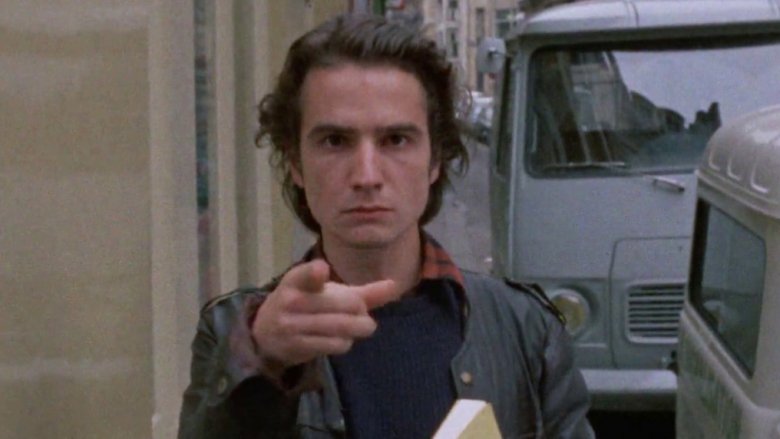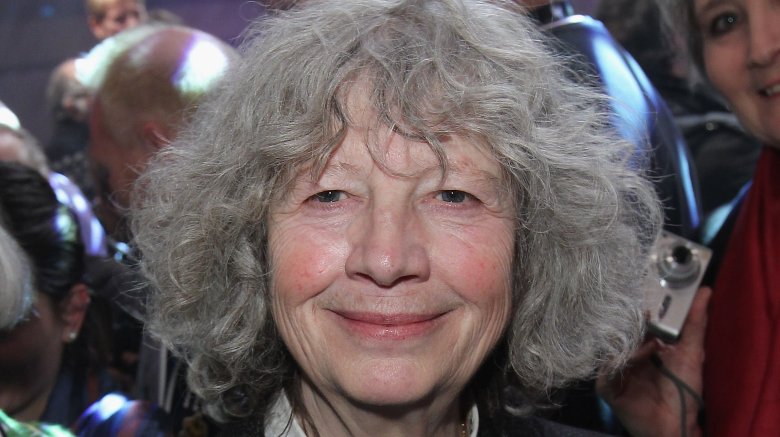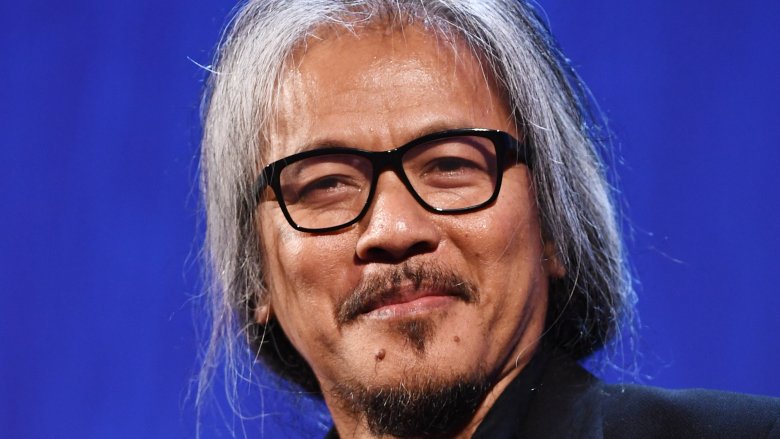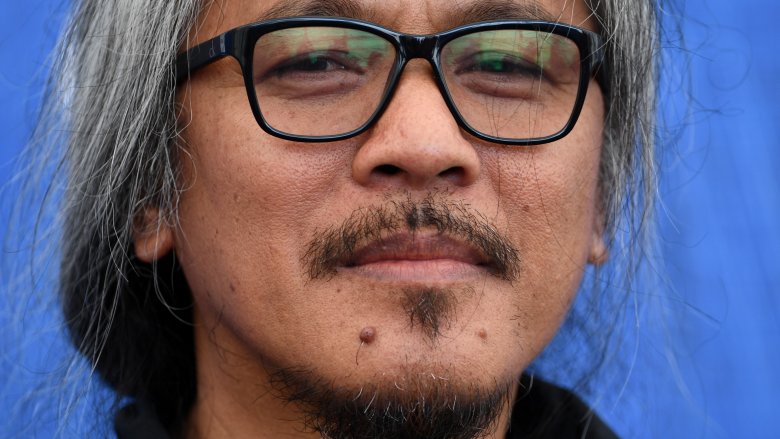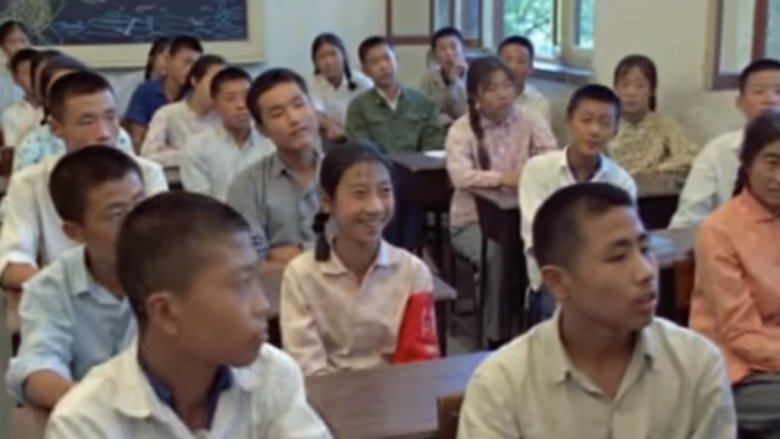The Longest Movies In History
We may receive a commission on purchases made from links.
If the latest big-budget superhero blockbuster or Star Wars installment gave you that gnawing feeling in your bladder that comes with a padded runtime, then you may not be familiar with the world of "slow cinema."
Some movies are long enough to make Captain America: Civil War look like a teaser trailer—and not just weird experimental films, like Andy Warhol's infamous eight-hour static shot of the Empire State Building. These long movies were all released theatrically, and every one of them—even the ones that are, you know, really good—will leave all but the most patient audiences concentrating harder on the exit sign than the screen. Here are the longest movies in history.
A Lullaby to the Sorrowful Mystery (2016, Philippines)
There will be a recurring theme here, and that theme will be the tiny island nation of the Philippines. While it was film critic Jonathan Romney who coined the term "slow cinema," it's the Filipino film scene that introduced the form to the world, and a couple of its key figures are responsible for many of the genre's landmarks. Case in point: A Lullaby to the Sorrowful Mystery, a title befitting an eight-hour, five-minute film that tells the story of how the Philippines liberated themselves from the rule of Spain in 1896.
Director Lav Diaz is probably the name most associated with slow cinema, and while he's produced some very well-received films of interminable length, this is not one of them. The black-and-white epic has been described as "lumbering," with its many striking images offset by static shots of inane conversations that take forever to resolve; Variety reviewer Guy Lodge noted that "'It picks up after the first three hours' is no way to sell a film even to the most hardcore of arthouse patrons," while the Hollywood Reporter's review said it's "distinguished by Diaz's trademark disregard for trying the viewer's patience with static long takes and lack of narrative flow."
Taiga (1992, Germany)
Writer/director Ulrike Ottinger has been in the documentary film business for over 40 years, tackling a wide range of topics all over the globe. She could probably talk your ear off about damn near anything, but when it comes to the nomads of Northern Mongolia, we know just how long it takes her to say what she needs to say: eight hours and 21 minutes, exactly the length of her 1992 documentary Taiga.
As you might imagine, Taiga is an absolutely exhaustive exploration of the lives of these people, yet most critics actually found it completely fascinating. Nomads, you see, don't have much use for time; they're never in a hurry, and Ottinger's film reflects this in the most literal sense. The Village Voice called it "staggeringly patient," which kind of sounds like a passive-aggressive criticism but was not intended as such, while the New York Times raved that the film gives us "much more than a tourist's-eye view of an ancient tribal culture. At such times, it conveys a sense of really being there." So if you're ever in the mood for a day trip to Northern Mongolia but are too short on cash and/or jet packs to make it happen, a viewing of Taiga could be just the ticket.
Heremias Book One: The Legend of the Lizard Princess (2006, Philippines)
Here's Lav Diaz again with an extra-sprawling, nine-hour fictional epic about a trader named Heremias who strikes out on his own, away from his gang, and gets into all sorts of very slow-developing trouble. Heremias Book One: The Legend of the Lizard Princess is actually said to be one of the director's more accessible films, in that—unlike many of his works—it tells a fairly simple, linear story that's light on his signature narrative quirks (such as time jumps and flashbacks).
As Heremias wanders the Filipino countryside, helping Diaz paint a portrait of the lost souls and quiet desperation of its inhabitants, viewers are left to wonder for a ridiculously long time whether we're actually going to get the payoff of an actual Lizard Princess, which sounds awesome. Well, we're not going to tell you. But we will answer the other obvious question: is there a Heremias Book Two, and if so, how long is it? The answer: Yes, there is. It's subtitled The Legend of the Invisible Island, and it clocks in at a whopping...hour and 49 minutes.
Death in the Land of Encantos (2007, Philippines)
Unfolding in black and white over nine hours and five minutes, 2007's Death in the Land of Encantos is another Lav Diaz super-epic, this one chronicling the worst storm to ever hit the perpetually storm-wracked islands—super typhoon Durian (that's right, a super typhoon), which killed thousands of people and completely blasted the entire area in 2006.
The film mixes dramatic and documentary elements, and came together quite a bit faster than some of Diaz' other works, which can often take years to complete. It was widely praised, with one of the only Western reviews—from Variety—saying that it "plung(es) the viewer into an alternate time zone where distinctions between documentary and fiction, stasis and action slowly dissolve ... (the film) confirms helmer's status as a brilliant but consummately non-commercial artist." The movie tackles some tough subject matter, and sports an even tougher length—but if hours of soul-wrenching morbidity are your thing, you could do a lot worse. You could also, however, do a little better. We'll get to that shortly.
Tie Xi Qu: West of the Tracks (2003, China)
China's transition out of strict communist socialism was a long and painful one, so it stands to reason that the definitive cinematic document of this change would move just as deliberately. Tie Xi Qu: West of the Tracks was shot over two years by Chinese filmmaker Wang Bing, and over nine hours and 11 minutes, it ever-so-patiently documents the struggles of the remaining workers in the Tie Xi industrial district, which died a slow death in the late '90s and early 2000s; once the livelihood of over 50,000 people, Wang's film literally watches as it disappears before our eyes.
The New York Times called the film "an astonishingly intimate record of China's painful transition from state-run industry to a free market," while Variety opined that "viewers will find themselves hypnotized by its density and artistic integrity," while also admitting that it is "somewhat too long (one senses it would be ideal at around eight hours)," which may or may not be the reviewer's idea of a joke. The fact remains, however, that this once-thriving area is now a virtual ghost town—and without Wang and his film, there would pretty much be no hint that it ever existed.
Shoah (1985, France)
The 1985 French documentary Shoah is perhaps the single most vital document of those who survived the Holocaust, featuring nine hours and 26 minutes of interviews with people who actually lived through it. The great Roger Ebert described it powerfully, writing, "There is no proper response to this film. It is an enormous fact, a 550-minute howl of pain and anger in the face of genocide. It is one of the noblest films ever made." Shoah is widely considered to be one of the greatest documentaries of all time, but that doesn't mean you'll have fun watching it.
The word shoah—Hebrew for destruction—is what they call the Holocaust in Israel, and when the film was screened there for the first time, one audience member fainted and another suffered a heart attack. Filmmaker Claude Lanzmann doesn't shy away from asking the most brutal questions of his subjects (Ebert calls him a "patient interrogator"), and what he was able to capture with this film wasn't just the stories of the survivors, but what he called the "presence of an absence"—the enormity of the loss of life caused by one of the darkest periods in human history.
Evolution of a Filipino Family (2004, Philippines)
Guess who? By the time you've finished this article, you'll know Lav Diaz's face as well as your own. The self-explanatory title tells you most of what you need to know about Evolution of a Filipino Family—it's basically Diaz's version of Boyhood, shot in his signature black-and-white over eight years, telling the story of how one family copes with life in the Philippines during the rise and reign of Ferdinand Marcos, one of history's most reviled dictators.
While Evolution isn't the first film Diaz released, it was the first one he started making, and it effectively announced his intention to make his movies exactly as long as he damn well felt they needed to be. It uses its ten-hour, 47-minute runtime to tell a story spanning 16 years—an ambitious undertaking that Diaz pretty much nailed. Western reviewers generally had high praise, although—as Variety noted—the nearly 11-hour film was "unconscionably scheduled with just one ten-minute intermission" at the film festivals at which it screened. And there, in the most crowded public restrooms the world has ever seen, the longest pees of all time were taken.
How Yukong Moved the Mountains (1976, France)
Dutch documentarian Joris Ivens made a name for himself in North America in the early days of film, helping to establish the documentary format in the late '30s and early '40s. During China's cultural revolution of the early 1970s, Ivens became fascinated—enough so to spend several years there, shooting literal mountains of footage which would eventually be whittled down to a mere 12 hours and 43 minutes. The official document of this once-in-a-lifetime transformation of Chinese culture, How Yukong Moved the Mountains—which may or may not be a reference to the truck Ivens' editor used to to transport all the footage he shot—is the third-longest theatrical film ever made, and the seminal ultra-longform documentary.
The film is a priceless historical document, capturing the dynamics of a society in the midst of a radical shift in cultural attitudes and norms. It's also long as hell, so you'll probably never get a chance to see it on the big screen unless you happen to catch an exhibition of the work at a museum, which happens from time to time. But if you're really interested, you can totally piece together most of the film as a buttload of different segments on YouTube, many of which are easily as long as your standard feature.
Out 1 (1971, France)
The most gargantuan work of fiction ever put to film, 1971's Out 1 is set in France during 1968, a time when young people's dreams of a utopian society were beginning to be exposed as unattainable dreams and terrorism was presenting itself in new and scarier ways. With a labyrinthine plot of multiple intersecting threads, it may be the ultimate endurance watch: clocking in at nearly 12 hours, 53 minutes, it challenges viewers not only to stay in their seats, but to keep track of what the hell's going on throughout its marathon of a narrative.
It's a film that has come to be seen as a sort of Holy Grail, nearly impossible to view in its entirety without happening upon a random museum screening. In a 2015 overview, the New York Times attempts to shoot down the notion that the bonkers running time is meant as a challenge, saying that "the pace, which picks up and slows down throughout, is ... intrinsic to the inescapable atmosphere of the work," which is consistent with director Jacques Rivette's pet themes of "life as performance, performance as life, reality as a construction and reality as someone else's construction impinging on your own." And if you understood that, you are either a blisteringly awesome film student or in the middle of a really profound acid trip. Either way, congratulations.
Resan: The Journey (1987, Sweden)
The 1987 Swedish documentary Resan is an important film about a sobering topic: it examines the military use of nuclear technology on a global scale, its impact on the environment, and the public's perception of nukes. According to the website of filmmaker Peter Watkins, it's a "global peace film produced in 1983-86 by the Swedish Peace & Arbitration Society," which claims to be the world's oldest peace movement. It's probably a fascinating watch—but if you want to find out, you'll have to order the home video set, which consists of "5 DVDs that contain a total of 19 chapters (or Parts) each approximately 45-50 minutes in length." Needless to say, this is one long, long, long-ass movie: at 14 hours, 33 minutes, Resan (also known, appropriately enough, as The Journey) is the single longest theatrical film ever produced.
Little other information is available about it, mainly because it was shown once in 1987 at several film festivals around the world and has only been screened in its entirety a handful of times since. But hey, you can always hook up that sweet region-free DVD set, and if you do, no cheating: in order to get the true Resan experience, you have to watch it all at once.
